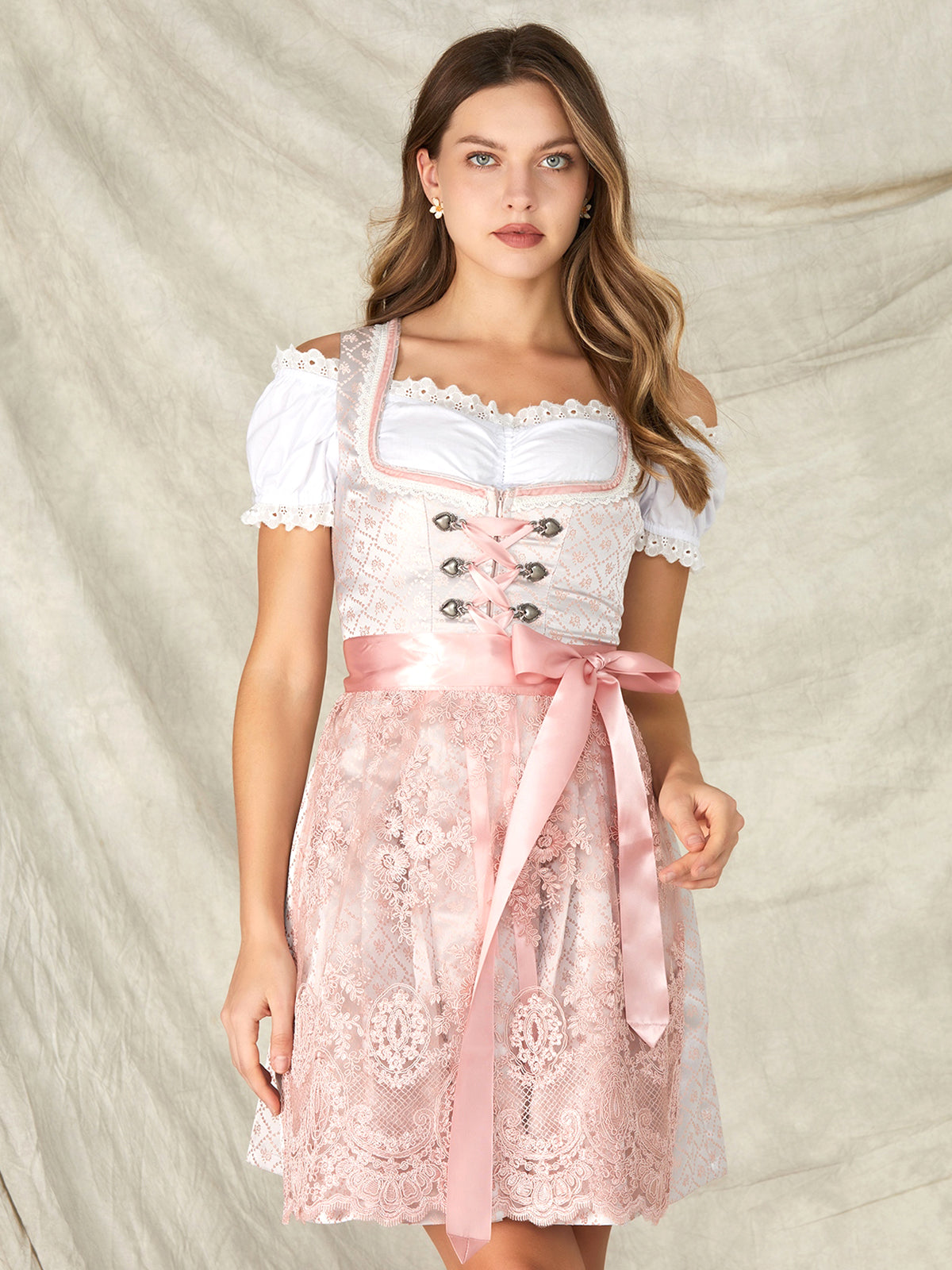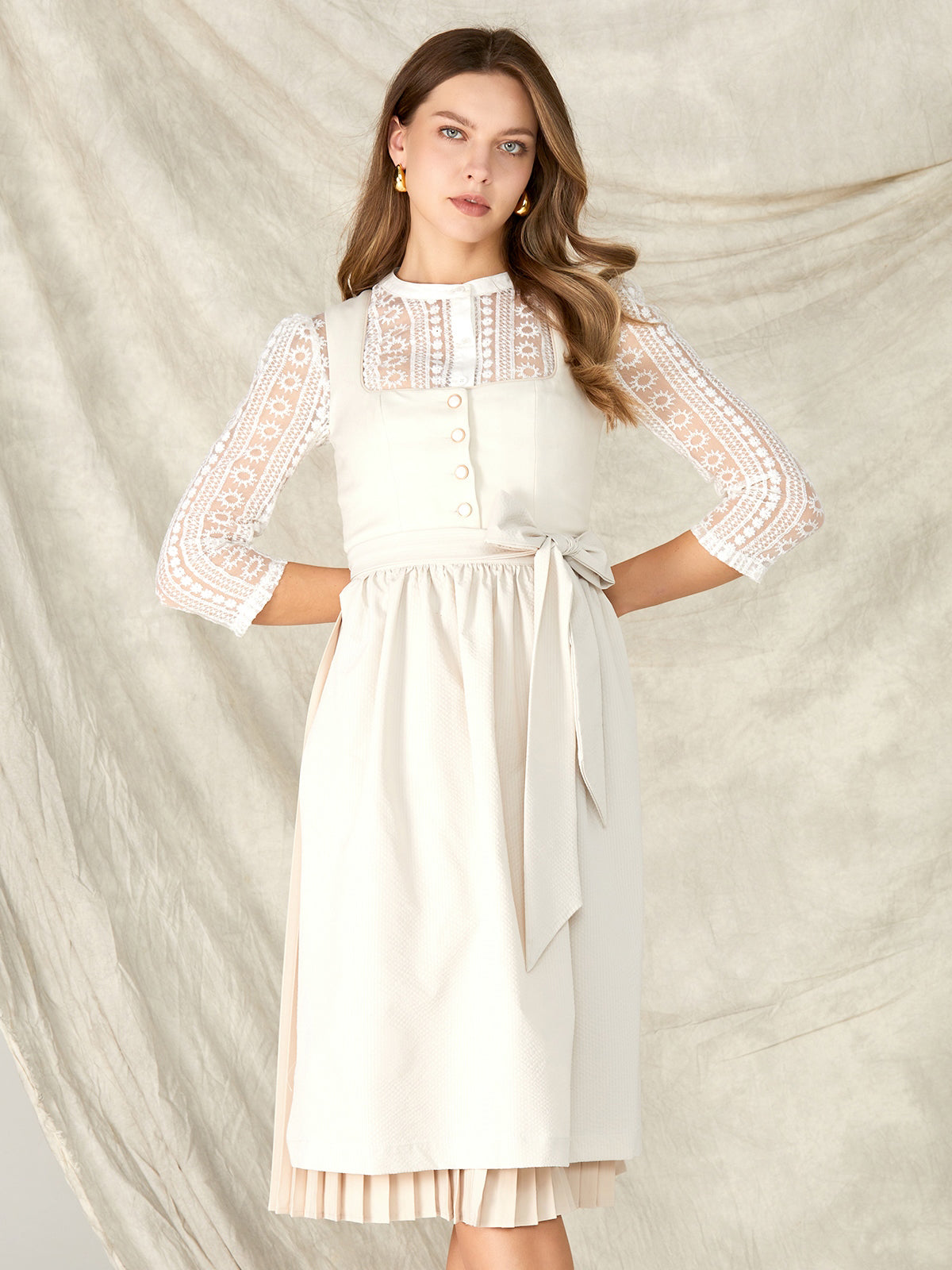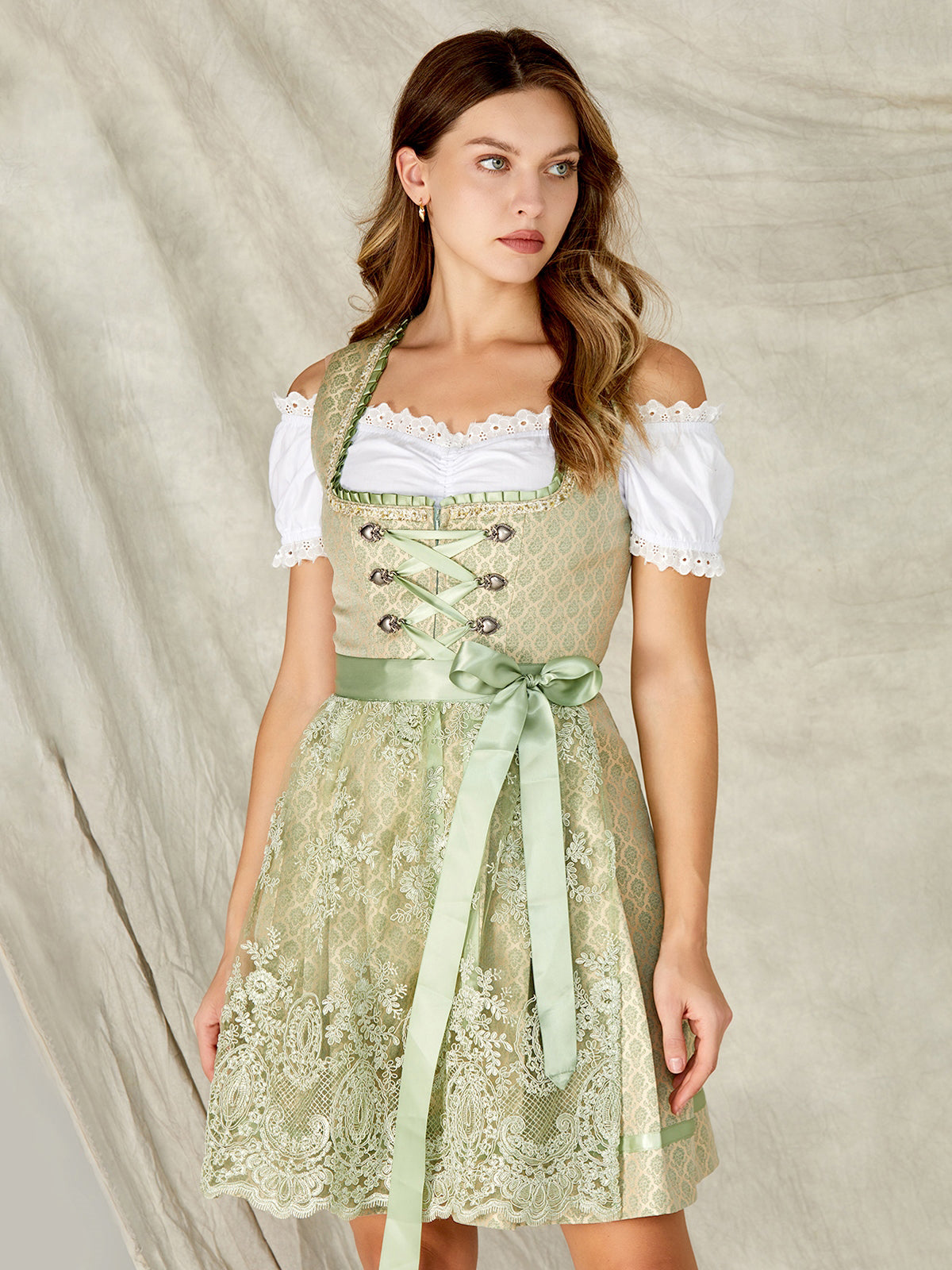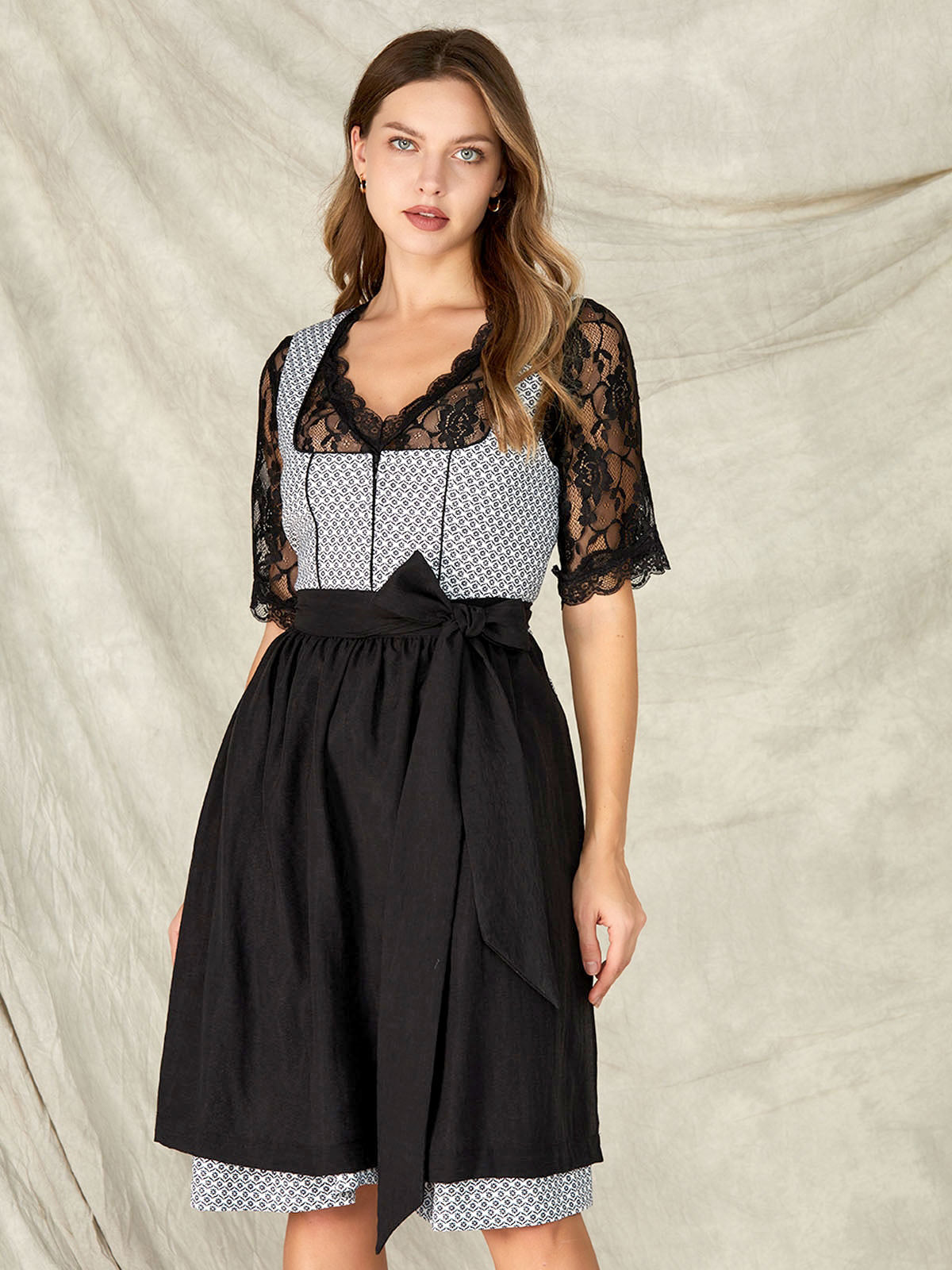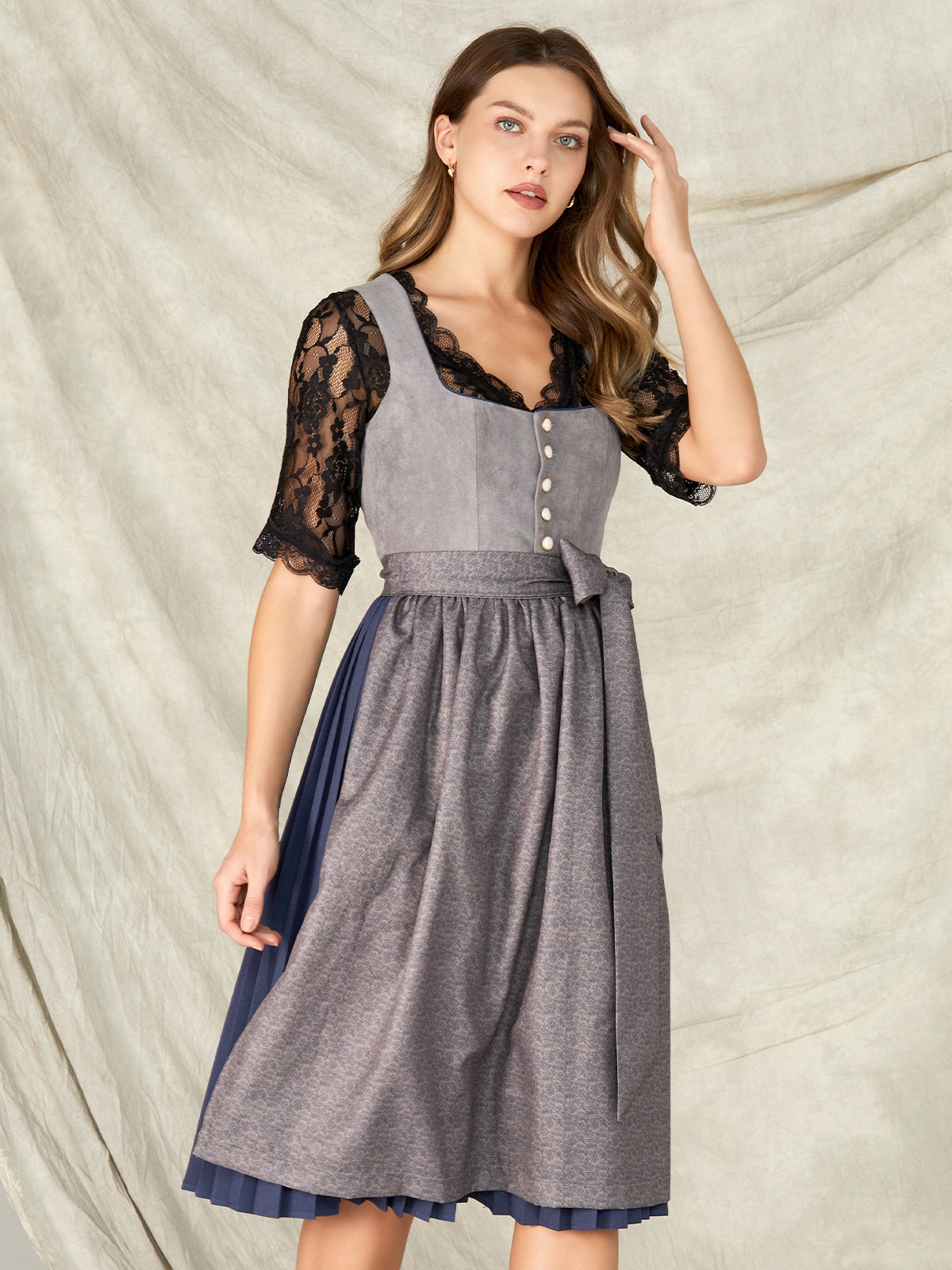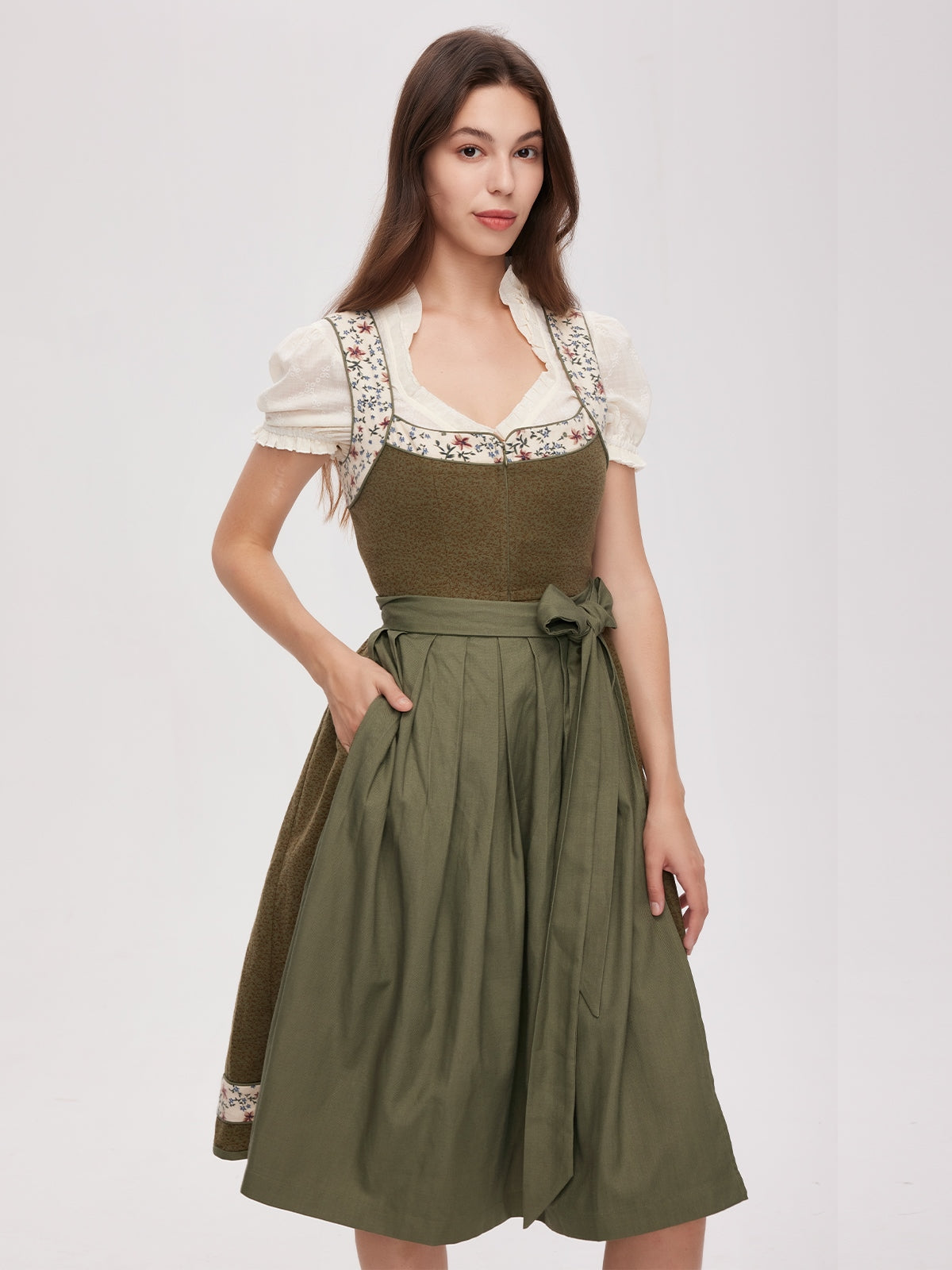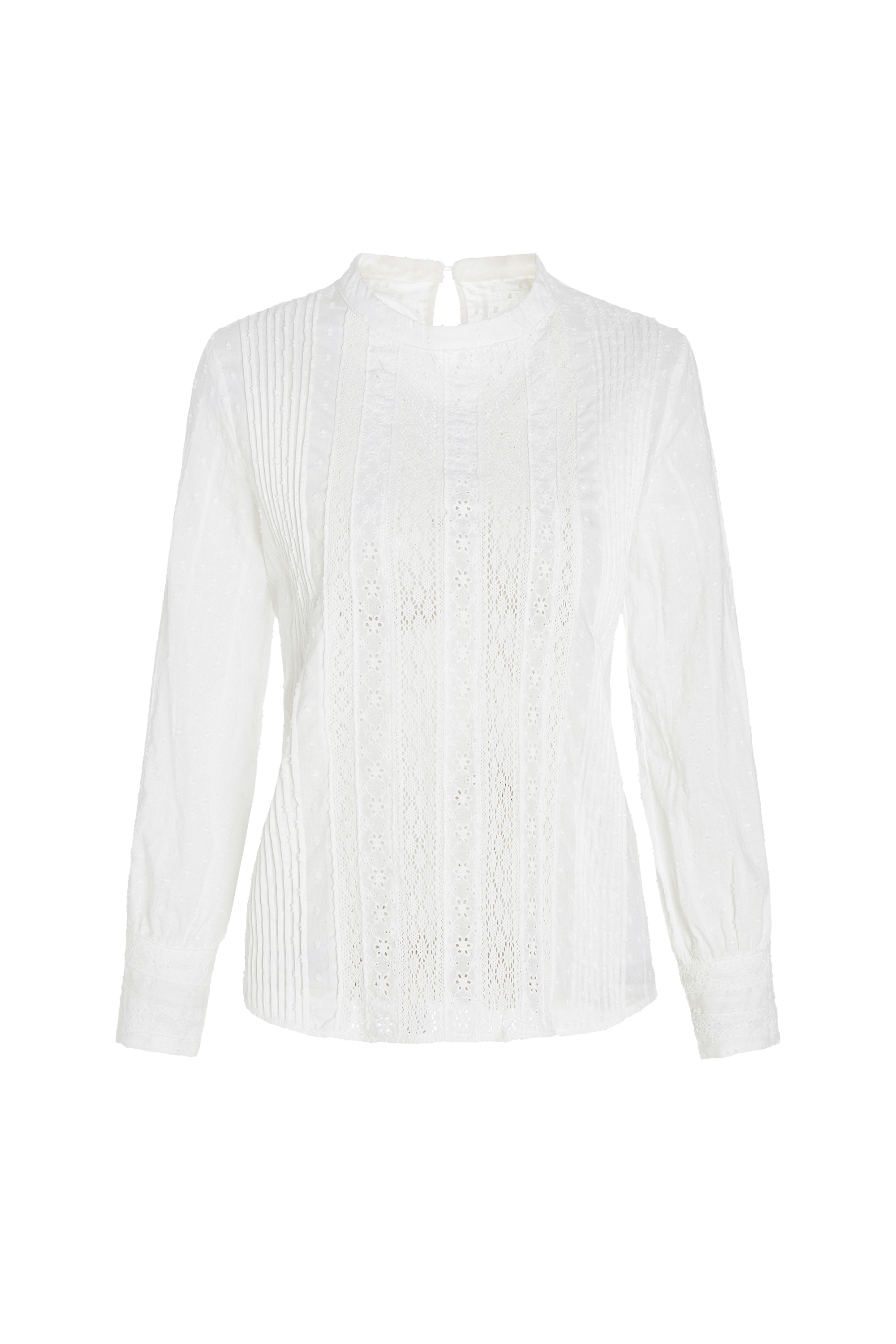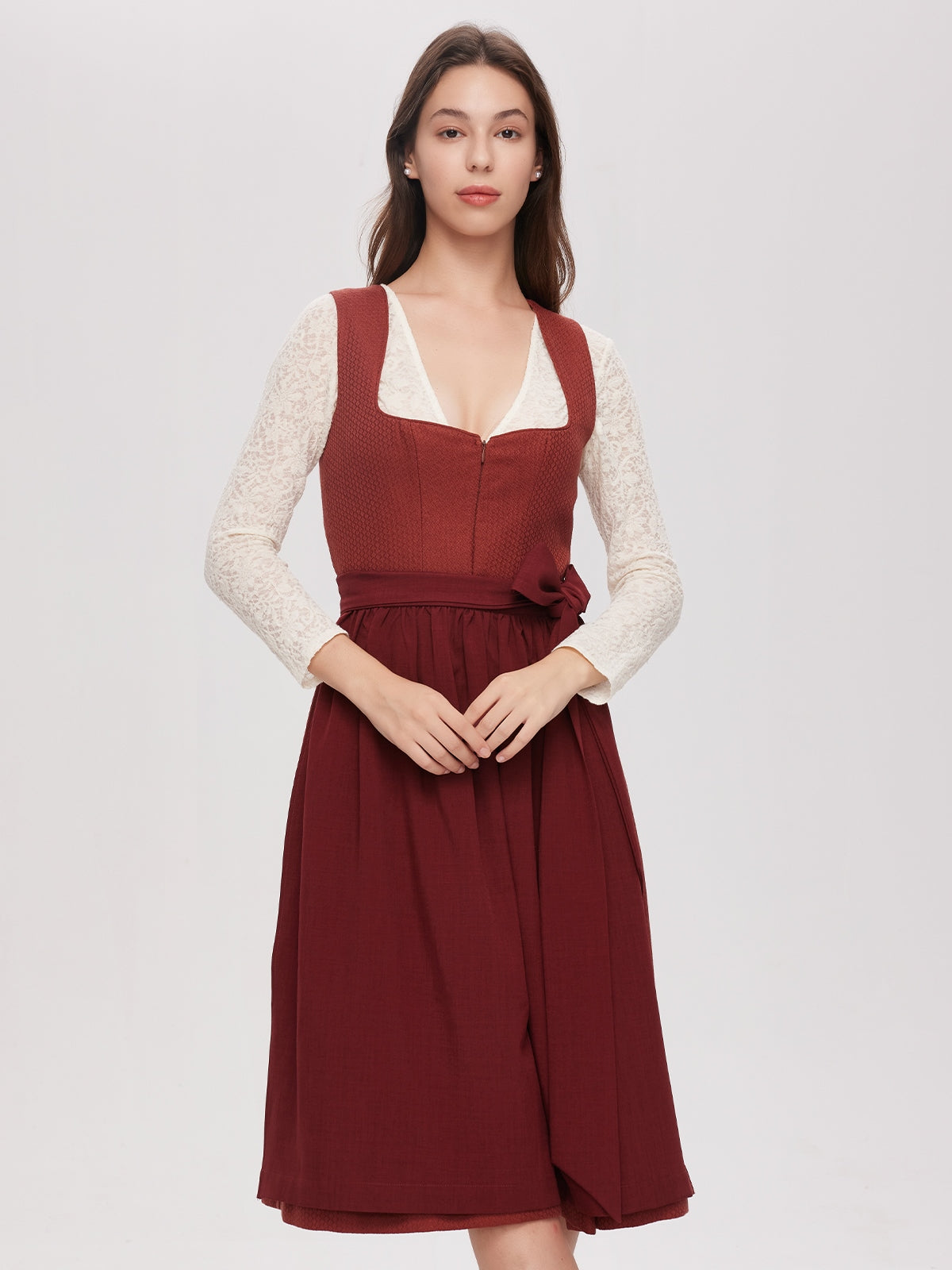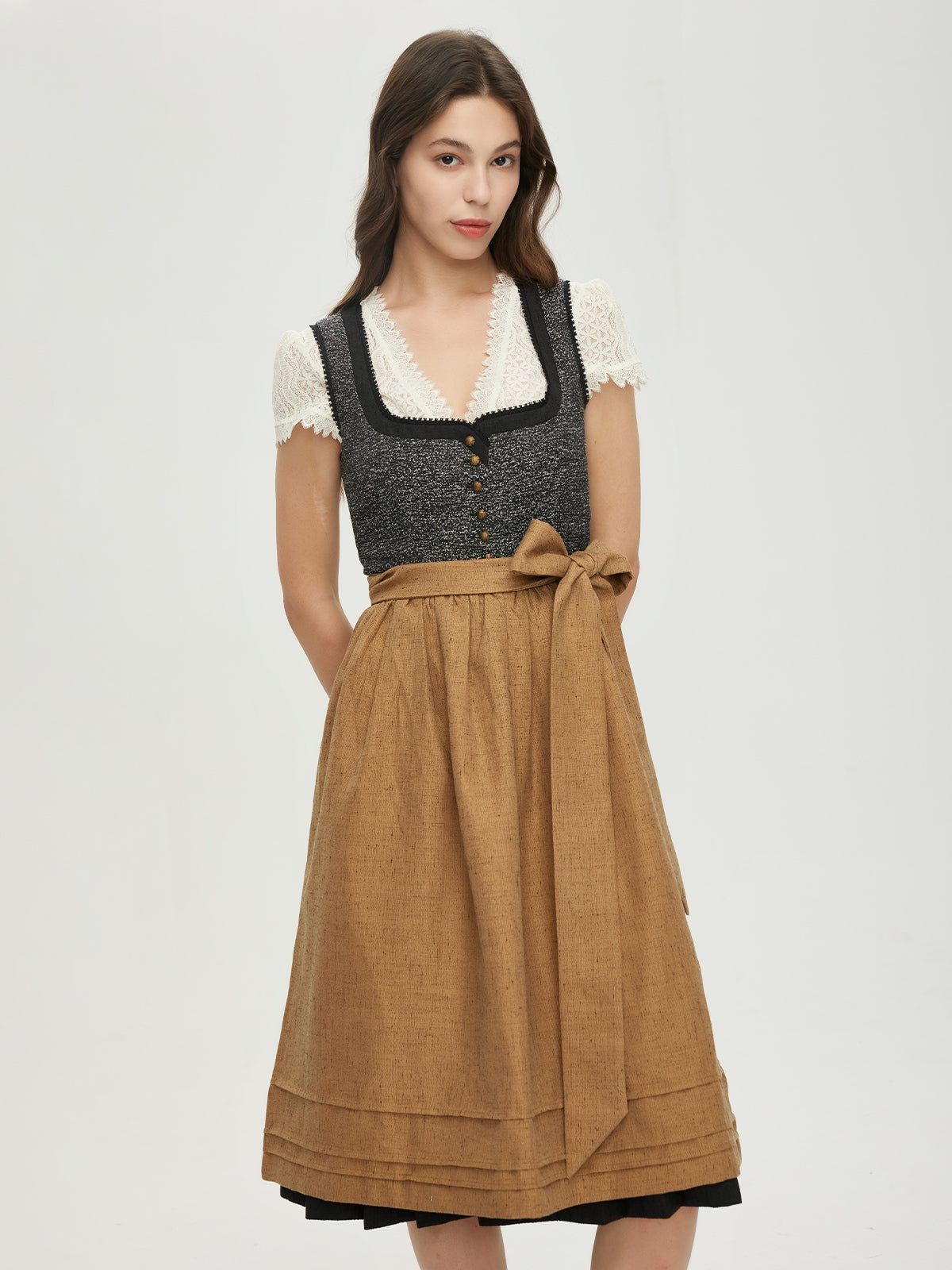In the streets of Munich, when the Oktoberfest opens its Bavarian heart, thousands of dirndls shine in bright colors – a vibrant mosaic of tradition and modernity. But behind this iconic garment lies a history that stretches back over a thousand years: from the practical everyday wear of Bavarian peasant women to the lavish fashion of the nobility to the global fashion icon of the 21st century. Let's unravel the threads of this fascinating evolution together.
1. 14th century: The Bavarian peasant hut – birth of an iconic dress
In the heart of the Alps, where the mountains embrace the world in gentle waves, Bavarian farming families lived in the 14th century. Their daily lives were characterized by hard hours of work in the fields and stables – a garment had to be robust, functional, and adapted to the harsh climatic conditions. Thus, the earliest model of today's dirndl was born: a simple, knee-length dress made of coarse wool, laced with a wide belt to ensure freedom of movement.
The structure was pragmatic: A tight-fitting top (called the "bodice") kept the wearer warm, while a wide apron made of linen or coarse wool covered the lower body. Head scarves made of cotton or linen protected from wind and snow—an accessory that has been preserved in traditional dirndls to this day. Interestingly, black was already a popular choice back then: black dirndls served not only as everyday wear but also as mourning clothing, as the color was considered modest and respectful.
These early forms were far removed from the elegance of later eras – but they laid the foundation for a garment that would become a symbol of an entire people centuries later.
2. 19th Century: From Farm to Stateroom – The Noble Revolution of the Dirndl
The turning point came with industrialization and the growing importance of Bavarian culture in the Prussian monarchy. In the 19th century, noble ladies began to take an interest in the "simple" Bavarian costume – thus giving it a completely new dimension.
Aristocratic fashionistas were inspired by rural motifs, but combined them with luxurious fabrics and craftsmanship. This led to dirndls made of silk, brocade, and velvet—fabrics previously found only in royal wardrobes. The "dirndl with velvet" was particularly popular: The soft, velvety texture gave the dress a refined touch, while the traditional lacing on the bodice and wide sleeves recalled peasant traditions.
This change was significantly influenced by the Prussian Queen Elisabeth (known as "Sisi"), who loved Bavaria and incorporated the local traditional costume into her court dresses. Suddenly, the dirndl was no longer just "peasant wear" but a status symbol—a garment that combined power, pride, and cultural identity. In the salons of Munich and Berlin, ladies now wore dirndls made of velvet and silk, decorated with embroidery and pearls—a colorful counterpart to the strict Prussian court fashion.
3. After 1945: From war trauma to tourism icon – The commercialization of the dirndl
The Second World War had hit Bavaria hard – but the recovery brought new opportunities. With the rise of tourism in the 1950s, entrepreneurs discovered the dirndl's potential as a "trademark of Bavaria." Suddenly, the dresses were no longer just made at home, but were mass-produced for tourists.
But commercialization also brought changes: traditional forms were simplified to make production more cost-effective. While black dirndls remained popular—especially versions labeled "classic"—there were also colorful versions in pink, red, and blue that particularly appealed to young women. At the same time, the "velvet dirndl" re-established itself: As a mid-priced option between inexpensive cotton and luxurious silk models, it offered an acceptable alternative for families and tourists seeking authenticity.
In the 1970s, the dirndl even became a symbol of Bavarian identity: at football championships, folk festivals, and not least at the Munich Oktoberfest, thousands of visitors wore the dresses – a living testimony to the fact that tradition does not ossify, but remains alive.
4. 21st Century: Punk, Bohemian and High Fashion – The Modernity of the Dirndl
Today, the dirndl is more than a cult symbol—it's a vibrant fashion style that's constantly being reinterpreted. Modern designers embrace traditional elements like the bodice, apron, and embroidery, but combine them with modern trends like punk, bohemian, and minimalism.
A prominent example is Munich-based designer Lena Bauer, who presented a 2023 collection combining dirndls with velvet, leather accents, and asymmetry. "The dirndl has a soul," she explains. "It can be as rugged as the Alps, but also as elegant as a ball gown—so why not both?"
The color palette has also expanded: In addition to the classic black dirndl, there are now neon colors, pastel shades, and even patterned models with floral or animal motifs. At the same time, tradition remains important: Many designers use sustainable fabrics such as organic cotton or recycled silk to meet their ecological responsibility.
Appendix: The collection of the Deutsches Museum Munich – evidence of a thousand-year history
The Deutsches Museum in Munich has dedicated a separate section to the dirndl, where the evolution of the garment can be traced using original pieces. Here are some highlights of the exhibition:
-
15th century: Wool dirndl from Tyrol – A rare example made of coarse wool fabric, it demonstrates its original function as a work dress. It is dark brown in color, with hand-painted floral patterns, presumably made with vegetable dyes.
-
1890: Silk dirndl with velvet accents – A work by Munich milliner Anna Müller, it was made for the upper class of the time. The bodice is made of black velvet, the apron is made of silk with gold embroidery – a prime example of the 19th-century aristocratic version.
-
1955: Mass-produced cotton dirndl – A model from the early postwar period, demonstrating the simplification of traditional cuts. The color is light blue, the apron embroidered with simple floral patterns – a symbol of reconstruction and the tourism boom.
-
2020: Punk dirndl by Lena Bauer – A modern design with leather straps, metal nails, and an asymmetrical apron. The basic structure follows the traditional form, but the details pay homage to youth culture.
From the Alpine farmer's hut to the Oktoberfest stage – the dirndl has transformed over a thousand years without losing its essence. It is a garment that keeps history alive, makes culture visible, and makes every woman who wears it part of a great, living tradition. Whether it's a black dirndl, a velvet dirndl , or colorful versions – it remains an iconic symbol that carries Bavaria around the world.

